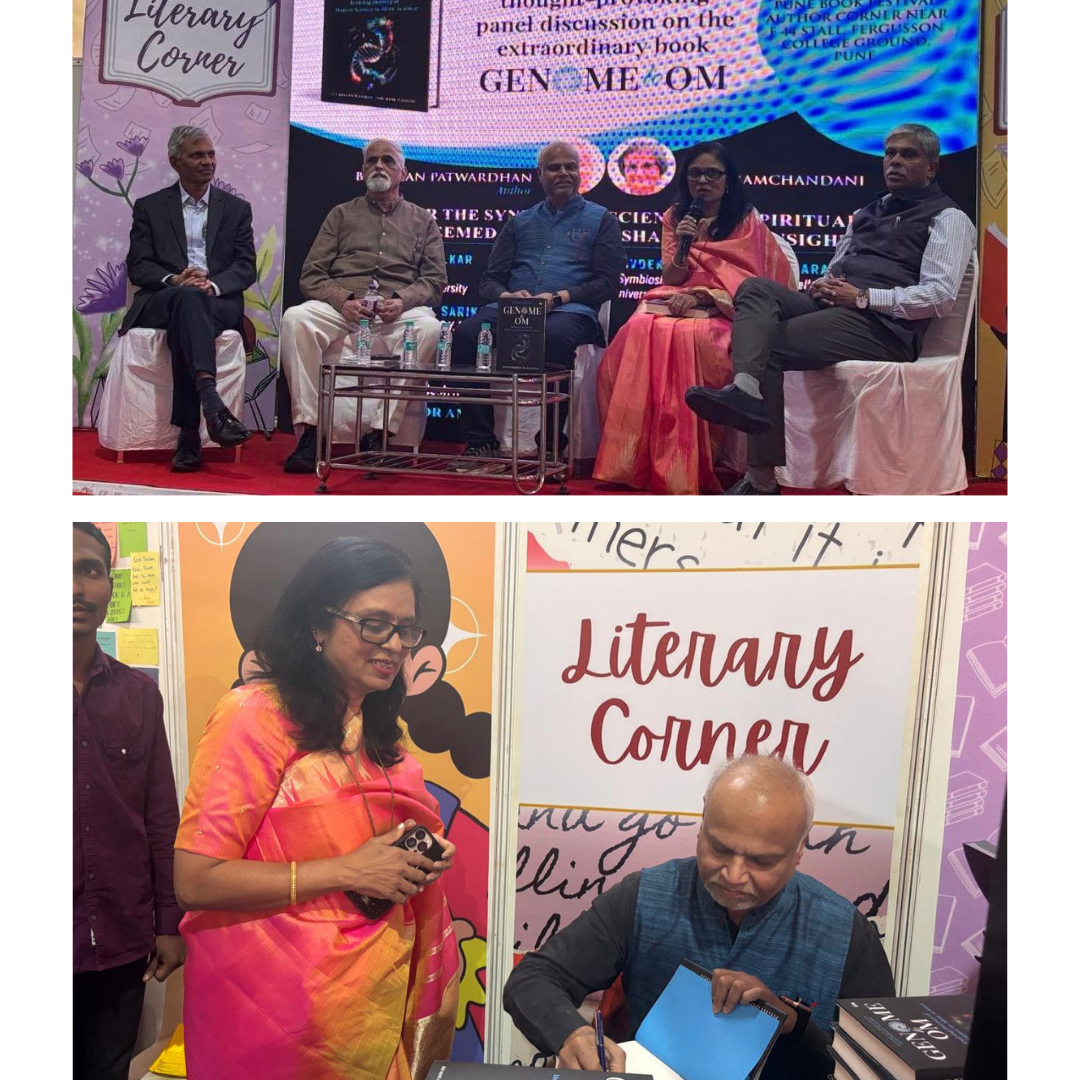
Last Monday, I wrote about the importance of reading books, and today I’d like to share my thoughts on one of my recent reads, Genome to Om.
Recently, the National Book Trust organized the Pune Book Mahotsav, one of the largest book festivals in India. Held at Fergusson College, it was a wonderful opportunity for me to take part in a discussion about Genome to Om. The festival itself was an incredible experience, showcasing bookstalls from some of the most renowned publishing houses in India. As a book enthusiast, it was truly a treat! I spent half a day exploring the stalls, picking up books not only for myself but also for my grandchildren.
Our discussion on Genome to Om, authored by Prof. Bhushan Patwardhan, was deeply engaging. Although a scientist, Prof. Patwardhan has extensively studied the Upanishads, Vedas, Indian scriptures, and the Bhagavad Gita—testament to his dedication. While the book is lengthy, it is an engaging read, born from over two decades of the author’s research. It is particularly timely, as it aligns with the growing movement to integrate Indian knowledge systems into modern educational curricula.
As a medical doctor and science educator, I have often pondered whether there’s a connection between science, Indian knowledge systems, and spirituality. Genome to Om beautifully bridges this gap, exploring the intersection of science, spirituality, and liberal arts.
When you first start reading the book, you approach it as a science student, but as you progress through the chapters, you transition from science to philosophy and then into spirituality. The chapters offer profound insights into the biological, social, and spiritual aspects of life. The author skilfully links modern scientific concepts with Indian scriptures, presenting them in a simple, accessible way. The book takes you on a captivating journey through science, meta-science, and spirituality.
One of the remarkable aspects of Genome to Om is its emphasis on questioning. Rather than providing answers, each chapter invites you to reflect and think deeply. It encourages readers, especially the younger generation, to become critical thinkers and thought leaders. A chapter titled “Who Am I?” and questions such as “What is the purpose of my life?” provoke deep reflection. It makes you question: “Why am I on this Earth? Is my purpose to make money? Is it to take care of my family? Or do I have a larger purpose?”
As you contemplate these larger questions, the book guides you toward the concept of oneness, or the ‘Om’. You realize that, in the grand scheme of things, you are just a small part of this vast universe, interconnected with countless other beings and forces. This spiritual essence is a key theme throughout the book.
The author uses the metaphor of a whole to illustrate interconnectedness: when you remove a small part of a larger whole, that piece still contains the essence of the whole. Similarly, when you remove a gene, the gene remains a fundamental part of a larger system. The book highlights that we are all part of a grand, interconnected universe.
For me, this theme aligns with the concept of Symbiosis, something I have experienced deeply in my life. My father, Dr. S. B. Mujumdar, exemplified this idea not just at the university but within our family’s daily life. Genome to Om resonates with this personal experience, reinforcing the idea that each of us is connected to every human being, every plant, animal, and all life forms. Ultimately, we believe that the world is one family—Vasudhaiva Kutumbakam.
This book could serve as a valuable textbook for students or as an enriching read for anyone curious about the depth of our ancient Indian traditions and how they relate to modern science. It beautifully demonstrates the relevance of evidence-based science within the context of Indian cultural scriptures.
Happy reading—Genome to Om!